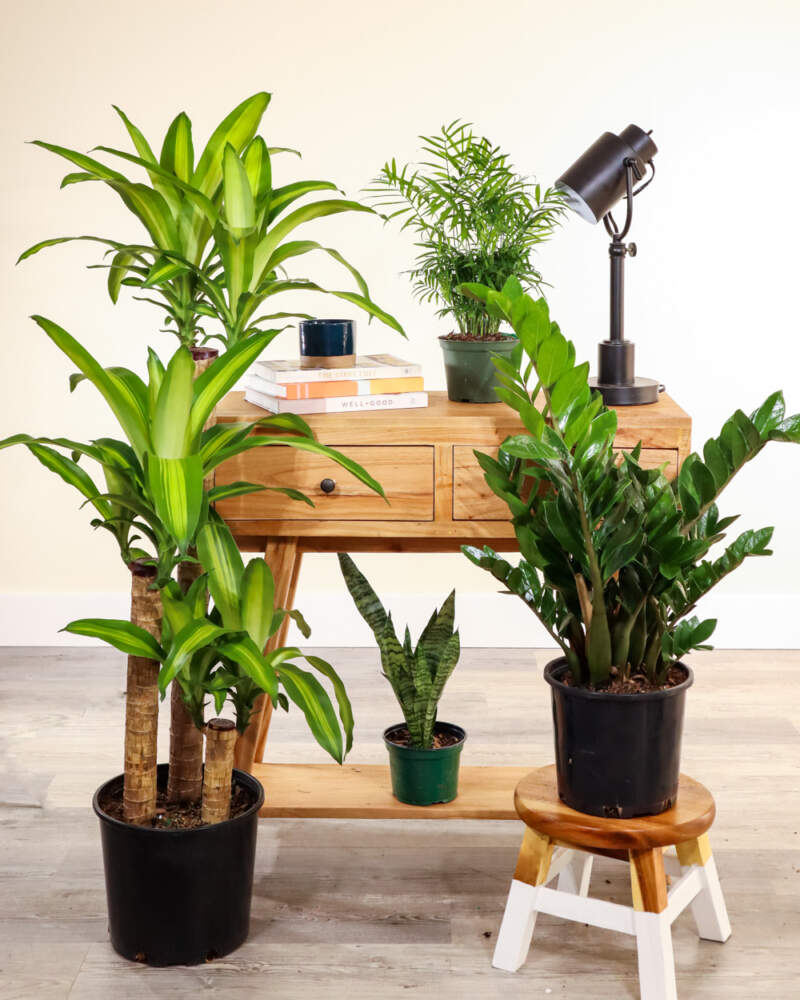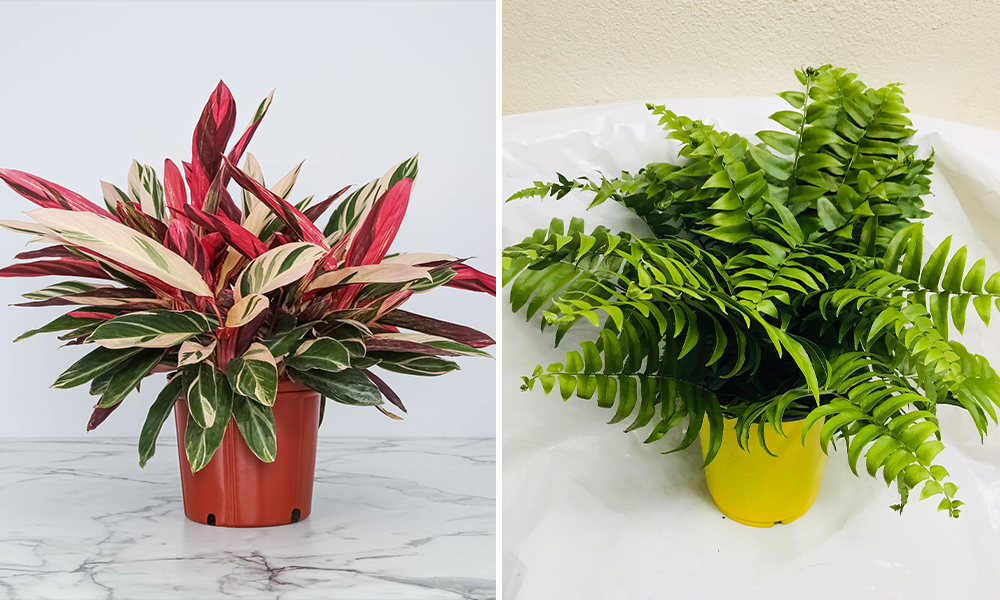Explore the One-of-a-kind Advantages of Low-Light Indoor Plants for Your Living Room
Including low-light indoor plants right into your living room offers a wide variety of benefits that prolong much beyond simple aesthetic appeals. These hardy plants not only prosper in environments with restricted sunlight however also serve crucial functions such as air purification and moisture improvement.
Air Purification Advantages
Low-light indoor plants not only improve the visual allure of living rooms but also play a considerable duty in air filtration. Research has demonstrated that particular plant species can successfully get rid of common indoor toxins, consisting of benzene, trichloroethylene, and formaldehyde. These substances often originate from family items such as furniture, cleaning items, and structure products, contributing to interior air high quality issues.
Plants such as the snake plant, pothos, and tranquility lily are specifically experienced at filtering dangerous materials from the air while flourishing in low-light problems. The procedure of phytoremediation, wherein plants take in and metabolize toxins, enables these types to contribute substantially to a much healthier indoor environment. Additionally, with photosynthesis, plants release oxygen, additionally boosting air top quality.
Including low-light interior plants into office or home areas not only gives aesthetic advantages yet additionally serves as a practical technique for enhancing air top quality. By selecting the right types, people can create an environment that promotes wellness and minimizes direct exposure to unsafe pollutants, making these plants a necessary aspect in modern-day indoor living.

Mood Improvement Impacts
Countless research studies have shown that integrating interior plants can considerably boost mood and overall mental wellness. The visibility of plant in interior settings has actually been connected to decreased anxiety degrees, boosted feelings of peace, and improved emotional health. Low-light indoor plants, particularly, thrive in environments where natural light is restricted, making them excellent for various living spaces.
Study shows that engaging with plants can stimulate the launch of serotonin, a natural chemical related to feelings of joy and health. In addition, the act of caring for plants promotes a sense of responsibility and accomplishment, more adding to positive mental wellness results. In addition, low-light plants such as snake plants, pothos, and peace lilies have actually been revealed to improve air top quality, which is fundamentally linked to state of mind enhancement.
Incorporating these plants right into your home or office can produce a serene environment, supplying a visual and sensory escape from the stress of every day life - Best low-light indoor plants. As individuals invest increasing quantities of time inside, the mood-enhancing effects of low-light interior plants become much more crucial, providing not just visual charm yet likewise an extensive effect on psychological well-being
Reduced Maintenance Needs
For those seeking to boost their indoor rooms without a substantial time commitment, low-light interior plants are an optimal option as a result of their low maintenance needs. These durable plants thrive in less-than-ideal illumination problems, making them best for workplaces and homes where all-natural sunlight investigate this site is limited.

Pest resistance is another benefit of low-light interior plants. Lots of varieties are less prone to common insects, reducing the requirement for consistent monitoring and intervention. Moreover, these plants usually expand more gradually than their high-light equivalents, suggesting less frequent repotting and trimming are essential.
Visual Charm and Convenience

Additionally, these plants can be arranged in myriad means, whether in teams for a rich impact or as standalone functions to attract the eye. The selections of planter designs-- from streamlined ceramic pots to rustic wooden containers-- better improve their visual worth, enabling home owners to share their individual design.
In addition, low-light plants can be purposefully positioned in locations that might or else really feel ignored, such as corners or dimly lit shelves, consequently maximizing their ornamental capacity. Ultimately, Go Here the combination of their striking look and versatility makes low-light interior plants a beneficial enhancement to any type of space, producing an inviting atmosphere that advertises health and leisure.
Enhanced Humidity Degrees
Enhancing interior humidity levels is just one of the substantial advantages of incorporating low-light indoor plants right into living areas. These plants naturally launch wetness vapor with a process referred to as transpiration, which happens when water taken in by the roots relocates with the plant and evaporates from the fallen leaves. This procedure not only increases moisture however also adds to a much healthier indoor setting.
Enhanced humidity degrees can ease different health concerns, such as dry skin, respiratory troubles, and allergies. Numerous people experience discomfort in dry indoor problems, especially throughout cold weather when heater remain in use. By purposefully putting low-light plants throughout your home, you can create an extra balanced moisture level that fosters general well-being.
In addition, specific low-light indoor plants, like tranquility lilies and crawler plants, are especially reliable at boosting moisture. Their capability to thrive in low-light atmospheres makes them perfect for numerous spaces, from offices to rooms. In addition to boosting humidity, these plants can likewise improve air top quality by removing typical interior contaminants, making them a beneficial addition to any kind of home. Therefore, low-light interior plants serve both aesthetic and useful objectives, promoting a much healthier atmosphere.
Verdict
In summary, low-light interior plants supply numerous benefits that add to a much healthier and extra welcoming living space. Their capability to cleanse the air, boost state of mind, and boost humidity levels highlights their worth as reliable decor aspects. Their reduced upkeep needs and visual convenience make them ideal for numerous settings. Including these resistant plants right into indoor setups not just elevates the ambiance but also promotes overall well-being, establishing a tranquil sanctuary for residents.
Plants such as the serpent plant, pothos, and tranquility lily are particularly experienced at filtering system damaging substances from the air while thriving in low-light problems. Low-light plants such as snake plants, pothos, and tranquility lilies have actually been shown to boost air high quality, which is intrinsically connected to mood improvement.
Low-light interior plants, such as serpent plants, pothos, and ZZ plants, not only boost the aesthetic landscape of a space yet likewise present different textures and tones of green that can enhance diverse indoor designs. These plants naturally launch wetness vapor via a process recognized as transpiration, which occurs when water taken in by the origins moves via the plant and evaporates from the leaves.In addition, specific low-light interior plants, like peace lilies and spider plants, are specifically effective at boosting moisture.